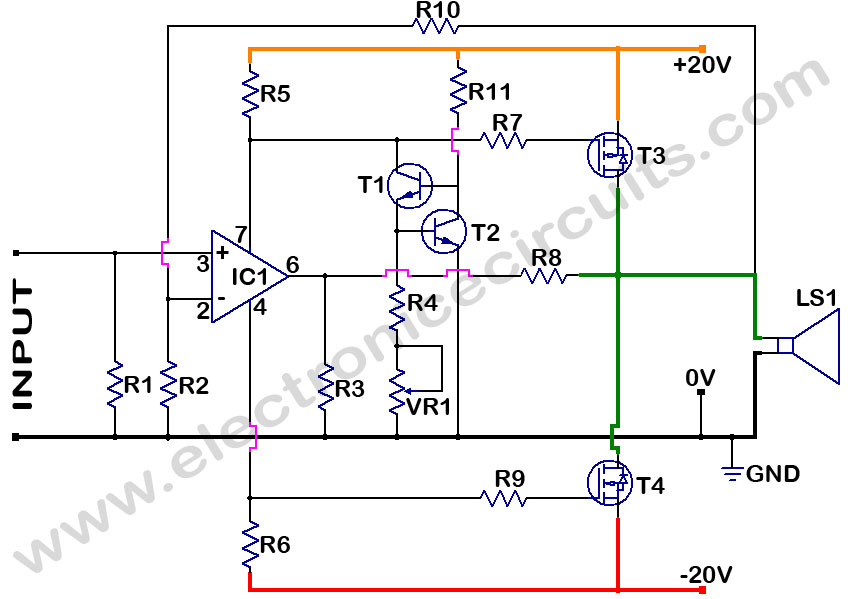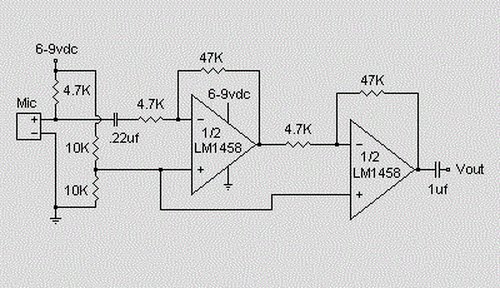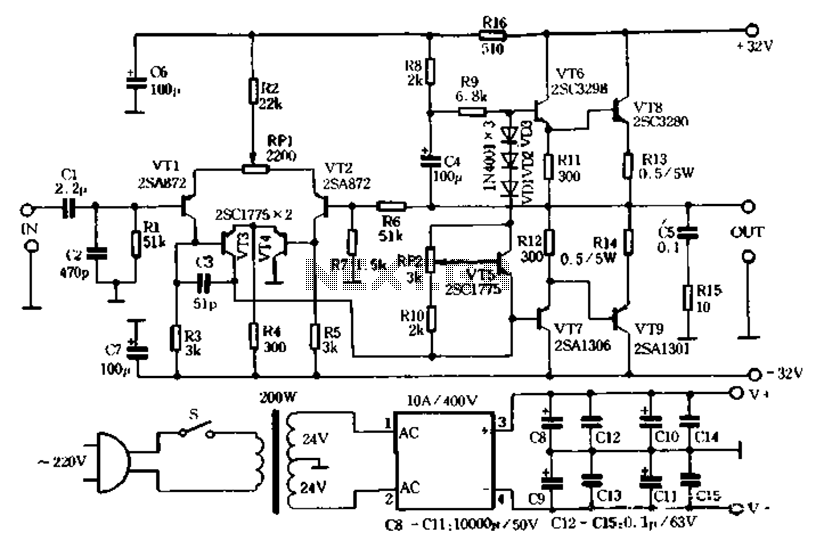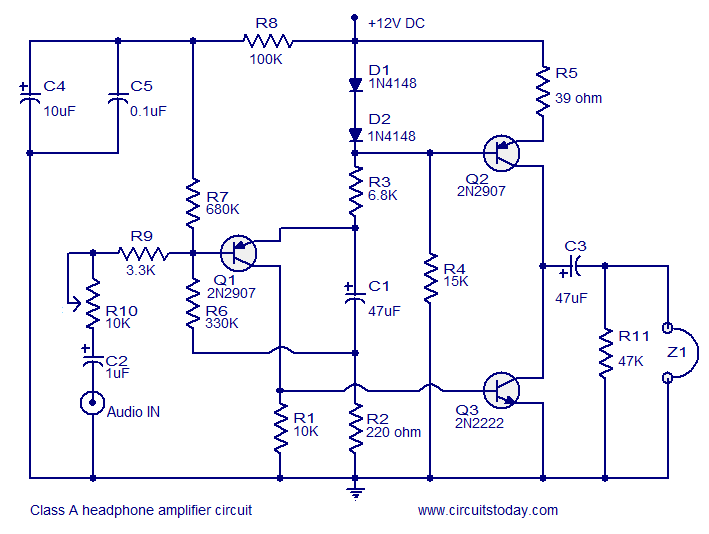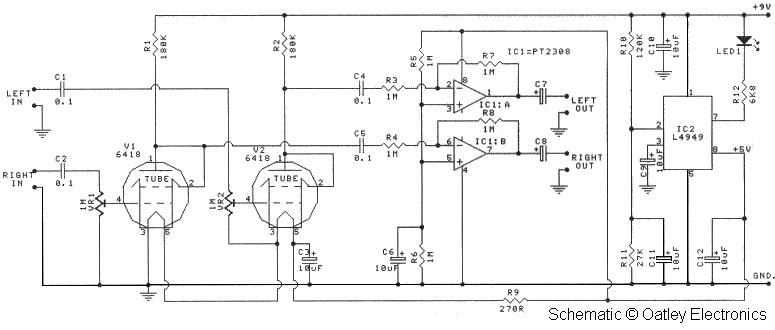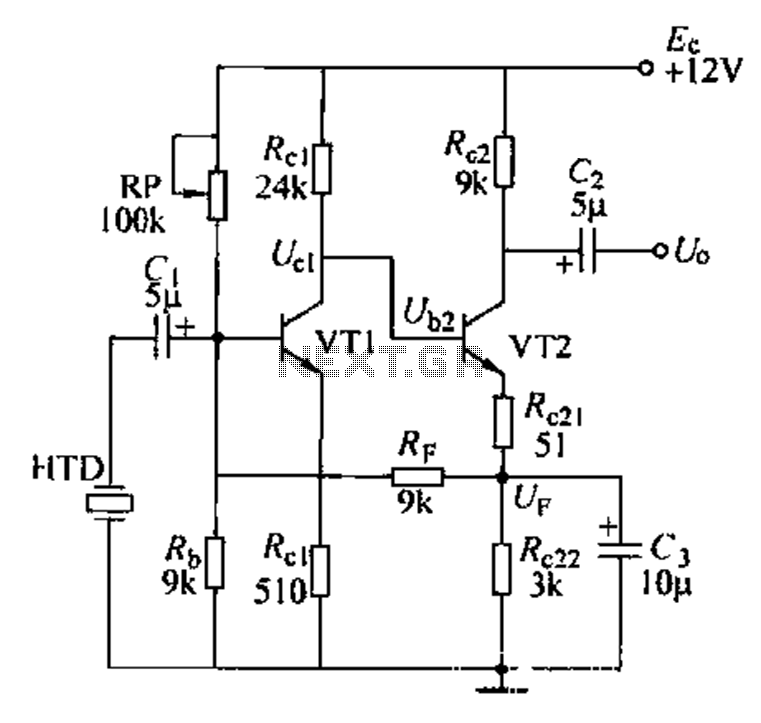
vhf antenna amplifier

The PCB of this circuit should be positioned close to the antenna within a compact metallic enclosure. This VHF antenna circuit requires a 12 volts DC power supply, which can be sourced from a 12-volt battery, as the current consumption of this circuit is minimal, under 10mA.
The VHF antenna circuit is designed for efficient operation in the VHF frequency range, typically between 30 MHz and 300 MHz. The placement of the PCB near the antenna is crucial for minimizing signal loss and ensuring optimal performance. The metallic box serves not only as a protective casing but also as a shield against electromagnetic interference (EMI), which can degrade the signal quality.
Powering the circuit with a 12-volt DC supply is appropriate, given the low current consumption of less than 10mA. This low power requirement allows for the use of compact power sources, such as a 12-volt battery, which can be easily integrated into portable applications. The circuit may include voltage regulators or filtering capacitors to stabilize the power supply and prevent noise from affecting the circuit's performance.
The PCB layout should be designed with careful consideration of trace lengths and widths to minimize resistance and inductance, which can impact the circuit’s efficiency. Additionally, the use of high-quality components, such as low-noise amplifiers and precision resistors, will enhance the overall performance of the VHF antenna circuit. Proper grounding techniques should also be employed to reduce the effects of ground loops and ensure signal integrity.
Overall, this circuit configuration is suitable for applications requiring reliable VHF signal reception in a compact and efficient design.The pcb of this circuit must be placed near the antenna, in a small metallic box. This VHF antenna circuit must be powered from a 12 volts DC power supply circuit, you can use a 12 volt battery, because the current consumption of this circuit is very low under 10mA. 🔗 External reference
The VHF antenna circuit is designed for efficient operation in the VHF frequency range, typically between 30 MHz and 300 MHz. The placement of the PCB near the antenna is crucial for minimizing signal loss and ensuring optimal performance. The metallic box serves not only as a protective casing but also as a shield against electromagnetic interference (EMI), which can degrade the signal quality.
Powering the circuit with a 12-volt DC supply is appropriate, given the low current consumption of less than 10mA. This low power requirement allows for the use of compact power sources, such as a 12-volt battery, which can be easily integrated into portable applications. The circuit may include voltage regulators or filtering capacitors to stabilize the power supply and prevent noise from affecting the circuit's performance.
The PCB layout should be designed with careful consideration of trace lengths and widths to minimize resistance and inductance, which can impact the circuit’s efficiency. Additionally, the use of high-quality components, such as low-noise amplifiers and precision resistors, will enhance the overall performance of the VHF antenna circuit. Proper grounding techniques should also be employed to reduce the effects of ground loops and ensure signal integrity.
Overall, this circuit configuration is suitable for applications requiring reliable VHF signal reception in a compact and efficient design.The pcb of this circuit must be placed near the antenna, in a small metallic box. This VHF antenna circuit must be powered from a 12 volts DC power supply circuit, you can use a 12 volt battery, because the current consumption of this circuit is very low under 10mA. 🔗 External reference
